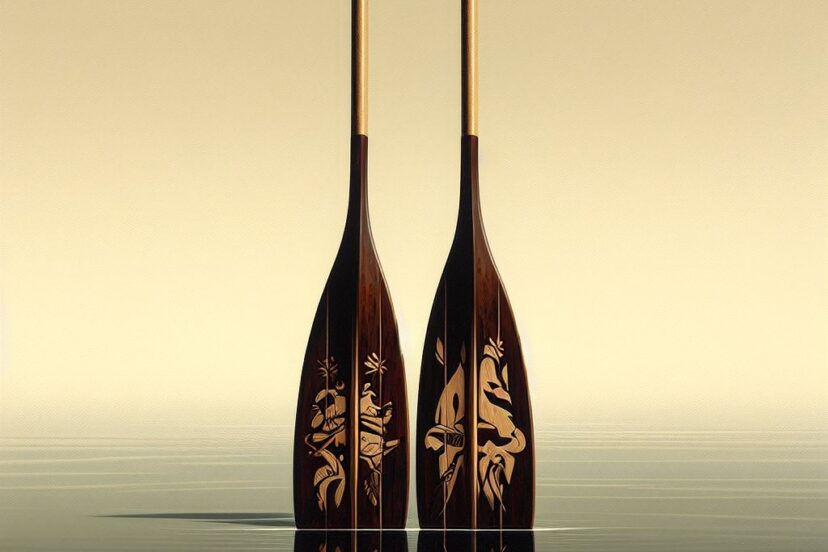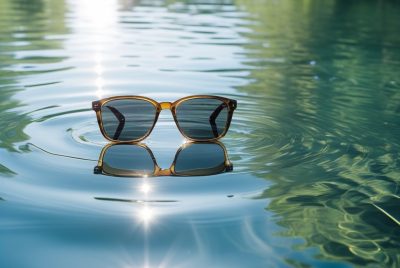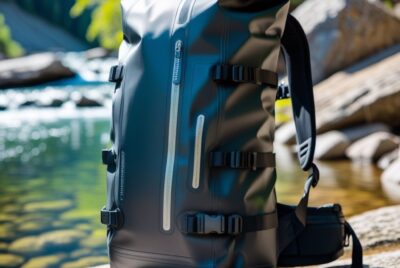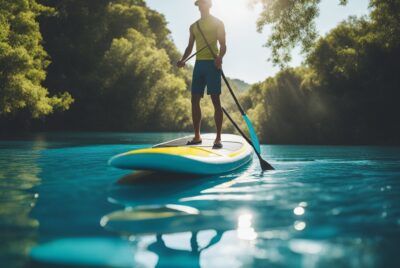Canoe Paddles: Expert Guide to Choosing the Right One
*We may earn a commission for purchases made using our links. Please see our disclosure to learn more.
Canoe Paddles: Expert Guide to Choosing the Right One
Canoeing offers a tranquil escape into nature, providing a unique perspective on rivers, lakes, and coastal waterways. Canoe paddles, an essential tool in this endeavor, becomes the conduit between the paddler and the water, dictating the speed, maneuverability, and overall enjoyment of the journey. Crafted from a variety of materials such as wood, fiberglass, or carbon fiber, each type of paddle has its own set of characteristics suiting different environments and personal preferences.
Choosing the right canoe paddle is a delicate balance of form and function. Weight, durability, and blade shape are critical factors that can enhance or detract from a paddler’s experience. A lighter paddle reduces fatigue during long trips, while a durable one offers assurance against the unpredictable elements. The blade shape affects water resistance and paddling efficiency, making it wise for potential buyers to consider where and how they plan to use the paddle when making a selection.
The most discerning paddlers also consider the paddle’s shaft shape and length, grip style, and overall balance. The length of the paddle should correlate with the paddler’s height and the width of the canoe, for an ergonomic and effective paddling motion. Attention to detail in the paddle’s design can significantly impact comfort and efficiency during hours of paddling.
Selecting the perfect canoe paddle is a marriage of personal comfort and technical specifications. With an appreciation for the nuances of each paddle’s design, I look for craftsmanship and performance that harmonize with my paddling style. In pairing my knowledge with hands-on testing, I aim to unveil the canoe paddles that stand out for their quality and design, making it easier for enthusiasts to find their ideal match.
Top Canoe Paddles
As an avid paddler, I’ve spent countless hours navigating waterways and have come to understand the importance of a good canoe paddle. My hands-on experience has given me a keen eye for the essential qualities in paddles. In the following roundup, I’ve selected the finest canoe paddles available, each chosen for their craftsmanship, durability, and performance on the water. These options stand out for their ability to enhance your paddling experience, whether you’re on a serene lake or facing the challenge of a flowing river.
Attwood Aluminum Paddle
I definitely recommend the Attwood Aluminum Paddle for any casual or recreational paddler seeking durability and comfort in their canoeing adventures.
Pros
- Lightweight, easy to handle for prolonged periods
- Ergonomic palm grip and padded shaft offer comfort
- Withstood the rigors of contact with rocks and debris
Cons
- Limited to 4 feet, potentially short for taller individuals
- Foam padding could be longer for better hand protection
- Aesthetically basic design without color options
When I took the Attwood Aluminum Paddle out for a spin, the first thing I noticed was the lightweight feel which made paddling almost effortless. Maneuvering through the water was a breeze, and I could definitely do this all day without feeling fatigued, thanks to the ergonomic palm grip.
Stability and control are top-notch with the padded shaft grip. Whether I was slicing through still water or navigating a feisty current, the paddle offered a reassuring firmness. Handling the paddle is intuitive, and it becomes an extension of your own movements with seamless responsiveness.
Durability impressed me while canoeing through a rocky patch. Despite a few inevitable collisions with the riverbed, the Attwood paddle came out with barely a scratch. However, taller paddlers might find the four-foot length a bit limiting; I’m of average height and it was just right for me. Another slight miss is the lower foam padding—extending it a bit further towards the blade could enhance comfort during extended use, but it was sufficient for a typical outing. While the black design might not turn heads, its understated look speaks to its practical nature, focusing on performance rather than flashy appearance.
Canoe Companion Paddle
I found this paddle perfect for an effortless glide through still waters and sturdy enough for rapid streams.
Pros
- Lightweight design for easy handling
- Durable materials withstand tough use
- Comfortable grip for prolonged paddling
Cons
- Limited color selection
- May not suit professional-grade canoeing
- Slightly higher price point for the quality
Having recently taken the Canoe Companion Paddle out on a calm lake, the first thing I noticed was the ease with which I could maneuver. The lightweight nature meant I could keep paddling for hours without fatigue. It’s clear that the paddle is built with durability in mind, as it held up against the occasional scrape against rocks.
On the downside, the aesthetic options are sparse, which might disappoint those wanting to match their gear. Though it’s solid for recreational use, professionals might seek a paddle with more specialized features. Also, while the quality is commendable, I did pause at the price, which seemed a slight stretch for the value offered.
In summary, this paddle strikes a balance between functionality and comfort. It’s an excellent choice for casual excursions, and despite the price, it’s a worthy investment for those looking for reliable gear. If aesthetics and professional features aren’t at the top of your list, the Canoe Companion Paddle won’t disappoint.
Attwood Canoe Paddle
I’d recommend this paddle for its strong build and comfortable handling which contributes to an effective day on the water.
Pros
- Ergonomically designed grip enhances paddling comfort
- Sturdy aluminum and plastic materials promise longevity
- The shaft’s poly protection offers reliable hand placement
Cons
- At 5 feet, may be too long for children or shorter adults
- Lacks the aesthetic appeal of traditional wooden paddles
- Non-adjustable length limits versatility
Gliding through the water, the paddle felt both lightweight and well-balanced in my hands. The ergonomic grip is a particular highlight, reducing fatigue during extended use.
The aluminum shaft coupled with the black plastic blade gives the impression of durability that you’d expect from a reliable brand like Attwood. From my handling, the quality suggests it’s a paddle that will stand the test of time.
In use, the paddle moves smoothly through the water with minimal effort. It’s particularly notable how the grip design helps maintain efficient strokes. However, for those who favor the charm of a wood paddle, this one’s modern look might not appeal as much.
Despite being an excellent tool for adults, the fixed length could be a drawback for smaller paddlers. Adjustability is a feature I missed, especially when sharing with friends of varying heights. Nevertheless, for my solo excursions, this paddle met all my needs with aplomb.
SeaSense Aluminum Paddle
I’d definitely recommend this SeaSense Aluminum Paddle for its balance of affordability and functionality – it’s a solid choice for recreational paddlers.
Pros
- Efficient blade design makes paddling simpler
- Surprisingly lightweight, reducing arm fatigue
- T-Grip handle delivers extra control and comfort
Cons
- Durability may not satisfy the most demanding users
- Might not be the best fit for professional use
- White color can show dirt and marks more easily
After spending the day on the lake, I can say the SeaSense Aluminum Paddle’s performance grip and blade design made each stroke feel smooth and effective, cutting through the water with ease. The balance of lightweight feel and adequate strength was immediately noticeable; I covered quite a distance without tiring my arms.
The build quality stood out as well – the polypropylene blade and aluminum shaft handled the occasional bump against rocks without any sign of immediate damage. While it’s probably not indestructible, it’s certainly built well enough for the casual paddler like myself.
Lastly, the overall value proposition can’t be ignored. It’s rare to find a paddle that strikes such a good balance between cost and performance. This paddle is a reminder that you don’t need to break the bank for reliable gear on a peaceful day out on the water.
Attwood 4′ Camo Paddle
I recommend the Attwood 4′ Camo Paddle for paddlers seeking a reliable, comfortable grip, and sturdy construction for their casual canoe trips.
Pros
- Comfortable, ergonomic grip enhances paddling efficiency
- The camouflage design is visually appealing for outdoor enthusiasts
- Durable materials ensure longevity and resistance to wear and tear
Cons
- May be too short for taller individuals or deeper waters
- Camouflage design, while stylish, is not the best for visibility
- The paddle is not designed for high-performance or professional use
When I took the Attwood 4′ Camo Paddle out on the lake, the first thing I noticed was the sure grip provided by the ergonomic handle and poly-protected shaft. It was easy to keep a firm hold on it, which made for a more effective stroke and enjoyable paddling experience.
Maneuvering through the calm waters, the paddle’s aluminum and plastic construction offered a sturdy feel without weighing me down. It’s light enough to allow for quick, responsive movements, but robust enough that I wasn’t concerned about the possibility of it snapping under pressure.
As someone who appreciates the aesthetics of my gear, the camouflage pattern of the blade added a nice touch to the overall look of the canoe. It blended well with the natural surroundings, though I could see how it might blend a bit too well if dropped in water – a brighter color might be easier to spot.
Ultimately, this paddle met my expectations for a leisurely paddle down the stream. Its solid construction and comfortable grip made for a satisfying day of paddling, without any fuss.
Buying Guide for Canoe Paddles
Understanding Canoe Paddles and the Materials
I consider materials the backbone of paddle quality. Common materials include:
- Wood: Traditional, warm feel, aesthetic
- Aluminum and Plastic: Economical, durable
- Fiberglass and Carbon Fiber: Lightweight, performance-oriented
Each material impacts the paddle’s weight, flexibility, and durability.
Paddle Length
Choosing the right paddle length is crucial for comfort and efficiency. I use this table to match paddle length with my height:
| My Height | Paddle Length |
| Under 5’2″ | 52 inches |
| 5’2″ – 5’8″ | 54 inches |
| 5’8″ – 6’0″ | 56 inches |
| Over 6’0″ | 58 inches or more |
I ensure my paddle allows a comfortable upright seating position with elbows bent at a 90-degree angle when at the catch phase of the stroke.
Blade Shape of Canoe Paddles
The blade shape affects propulsion and maneuverability:
- Wide blades: Powerful strokes, rapid acceleration
- Narrow blades: Less resistance, efficient for long distances
Grip Type
The grip affects my comfort and control:
- T-grip: More control, suitable for whitewater
- Palm grip: Comfortable for long trips on calm waters
Weight and Balance
I opt for a paddle that feels balanced. A lighter paddle reduces fatigue, while a heavier one can provide a more solid stroke in windy conditions.
Utilizing these criteria, I am able to select a canoe paddle that best suits my needs without ever being swayed by exaggerated claims or brand loyalty.
Frequently Asked Questions
In this section, I’ll address some common concerns and queries individuals have when selecting and using canoe paddles.
1. What factors should be considered when choosing the best canoe paddle?
When selecting a canoe paddle, consider the paddle’s length, material, blade shape, and your intended use. The paddle should suit your body size and strength as well as the type of canoeing you plan to do.
2. How do I determine the proper length for my canoe paddle?
The right paddle length can be found by measuring the distance from your chin to the water when kneeling in the canoe (ideal for deep water paddling) or from your nose to the water when sitting (suited for shallow water). This measurement typically ranges from 52 to 60 inches but can vary based on individual height and paddling style.
3. Why might someone choose a bent canoe paddle over a straight one?
A bent paddle, with its angled blade, is designed to increase efficiency in the water by allowing for a more powerful stroke. This makes it an excellent choice for long distance paddling and for reducing the paddler’s fatigue over time.
4. What are the differences between canoe paddles and kayak paddles?
Canoe paddles have one blade connected to a long shaft, held with one hand on the grip and the other on the shaft. Kayak paddles have blades at both ends of the shaft and are held with both hands on the shaft. The design differences reflect the variations in paddling techniques and vessel types.
5. How do materials affect the performance of canoe paddles?
Materials greatly influence the weight, durability, and flex of a canoe paddle. For instance, wooden paddles are traditional and offer a natural flex, but can be heavier. Composite materials like carbon fiber are lighter and provide powerful strokes, while plastic and aluminum are cost-effective and durable, albeit less performance-oriented.








